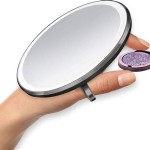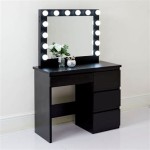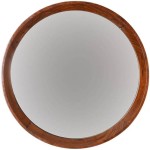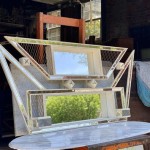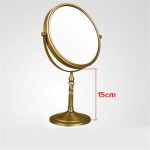Antique Leaner Mirrors: A Reflection of History and Style
Antique leaner mirrors, also known as cheval mirrors or floor mirrors, hold a unique place in the history of furniture and interior design. More than just reflective surfaces, these elegant pieces offer a glimpse into past eras while adding a touch of vintage charm to contemporary spaces. Understanding their history, construction, styles, and value can assist collectors and enthusiasts in making informed decisions about acquiring and caring for these beautiful objects.
Key Features of Antique Leaner Mirrors
Several key features distinguish antique leaner mirrors from their modern counterparts. These distinctions often contribute to their value and aesthetic appeal:
- Age: Generally, pieces over 100 years old are considered antique.
- Craftsmanship: Handmade construction and intricate detailing are highly valued.
- Materials: High-quality wood, often mahogany, walnut, or oak, is typical.
- Mirror Plate: Early mirrors might exhibit some imperfections or foxing (age spots) in the silvering, adding to their character.
A Brief History of Leaner Mirrors
Leaner mirrors emerged in the 18th century, gaining popularity during the Georgian and Victorian periods. Their design catered to the fashions of the time, allowing individuals to view their entire attire. Unlike wall-mounted mirrors, leaner mirrors offered portability and could be easily moved to suit the lighting conditions. This practicality contributed to their widespread adoption in both grand homes and more modest dwellings.
Styles and Design Elements
Antique leaner mirrors showcase a variety of styles, often reflecting the prevailing design trends of their respective eras:
- Georgian: Characterized by simple, elegant lines and mahogany frames.
- Victorian: Known for ornate carvings, gilding, and the use of walnut or rosewood.
- Art Nouveau: Featuring flowing lines, floral motifs, and occasionally incorporating stained glass or other decorative elements.
- Art Deco: Embracing geometric shapes and streamlined designs, often with inlaid wood or metal accents.
Identifying Antique Leaner Mirrors
Authenticating an antique leaner mirror requires careful examination. Observing specific details can help determine its age and origin:
- Construction: Look for signs of hand craftsmanship, such as dovetail joints and hand-carved details.
- Wood: Examine the type and quality of the wood. Older pieces will often feature solid wood construction.
- Mirror Plate: Antique mirrors may show signs of age, including foxing or imperfections in the silvering. Later mirrors often used thicker, clearer glass.
- Hardware: Original hardware can be a key indicator of age and authenticity.
- Backings: Older mirrors often have wooden backings, while later ones might use plywood or other materials.
Caring for Antique Leaner Mirrors
Preserving the beauty and integrity of an antique leaner mirror requires proper care and maintenance:
- Cleaning: Clean the mirror plate with a soft, lint-free cloth and a mild glass cleaner. Avoid harsh chemicals.
- Frame Care: Dust the frame regularly with a soft brush. Avoid using abrasive cleaners or polishes that could damage the finish.
- Handling: Handle the mirror with care, supporting the frame and avoiding pressure on the glass.
- Environment: Avoid placing the mirror in direct sunlight or areas with high humidity, as these conditions can damage the frame and the mirror plate.
Assessing the Value of an Antique Leaner Mirror
Several factors contribute to the value of an antique leaner mirror:
- Age and Rarity: Older and rarer examples generally command higher prices.
- Condition: Mirrors in excellent original condition are more valuable than those with significant damage or repairs.
- Style and Design: Certain styles, such as those from prominent designers or periods, are more sought after.
- Materials and Craftsmanship: High-quality materials and intricate craftsmanship increase value.
- Provenance: A documented history of ownership can significantly enhance a mirror’s value.
Displaying Antique Leaner Mirrors
Antique leaner mirrors can enhance a variety of interior design schemes. Their versatility allows them to be incorporated into various settings:
- Bedrooms: Provide a functional and elegant addition to a dressing area.
- Living Rooms: Can add a touch of vintage charm and create a focal point.
- Hallways: Offer a practical and stylish way to check one's appearance before leaving the house.
- Entryways: Create a welcoming and visually appealing first impression.
By understanding the historical context, design elements, and proper care techniques, individuals can appreciate and preserve these beautiful objects for generations to come.

Antique Carved French Style Floor Mirror Charmydecor

Large Standing Full Length Gilt Gold Framed Vintage Style Mirror Leaner By Smitten Furniture

Pembridge Antique Silver Leaner Mirror

Omri Ornate Antique Champagne Leaner Mirror Shine Mirrors

Tall Black Ornate Vintage Wall Leaner Mirror 80cm X 180cm Flora Furniture

Handsworth Leaner Mirror Antique Silver 170cm X 84cm Mirrors Exclusive

Gallery Interiors Harrelson Leaner Mirror In Antique Black Olivia S

Luxe Tapi Florence Antique Leaner Mirror In Silver Grey Buy From The Rug Er

Hand Crafted Antique Style Leaning Mirror Gold The Urban Mill

Antique Silver Ornate Large Statement French Leaner Dress Floor Wall Mirror 7ft



